Discovering Kalasan: An 8th-Century Buddhist Gem in Java
Kalasan Temple, also known as Candi Kalasan or Candi Kalibening, is a remarkable 8th-century Buddhist temple in Java, Indonesia. This ancient structure, located 13 kilometers east of Yogyakarta, stands on the south side of the main road to Prambanan. Administratively, it falls under the Kalasan District of Sleman Regency. Kalasan’s historical context is revealed by the Kalasan inscription, dated 778 AD. This inscription, written in Sanskrit using the Pranagari script, tells the story of Guru Sang Raja Sailendravamçatilaka who persuaded Maharaja Tejapurnapana Panangkaran to construct Tarabhavanam, a sacred building for the goddess Tara.
Get your dose of History via Email
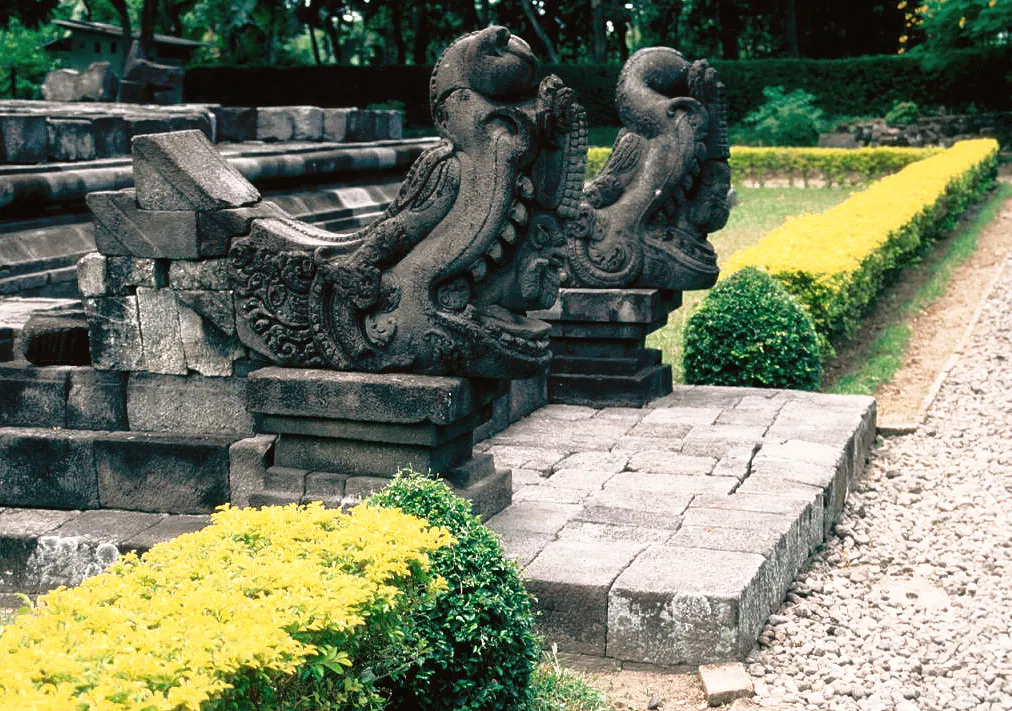
Architectural Splendor
Kalasan Temple stands out for its unique architecture. The structure rests on a square sub-basement measuring 14.20 meters and features a distinctive cross-shaped design that forms a twelve-cornered polygon. Each of the four cardinal points boasts stairs and intricately decorated gates adorned with Kala-Makara carvings. Rooms measuring 3.5 square meters flank these entryways. These smaller rooms likely once housed statues of Bodhisattvas, as evidenced by the remaining lotus pedestals. The temple’s rich decorations showcase a variety of Buddhist figures, including Bodhisattvas and Ganas. The Kala face above the southern door is a particularly striking example of the artistry of Central Javanese stone carvers from a millennium ago.
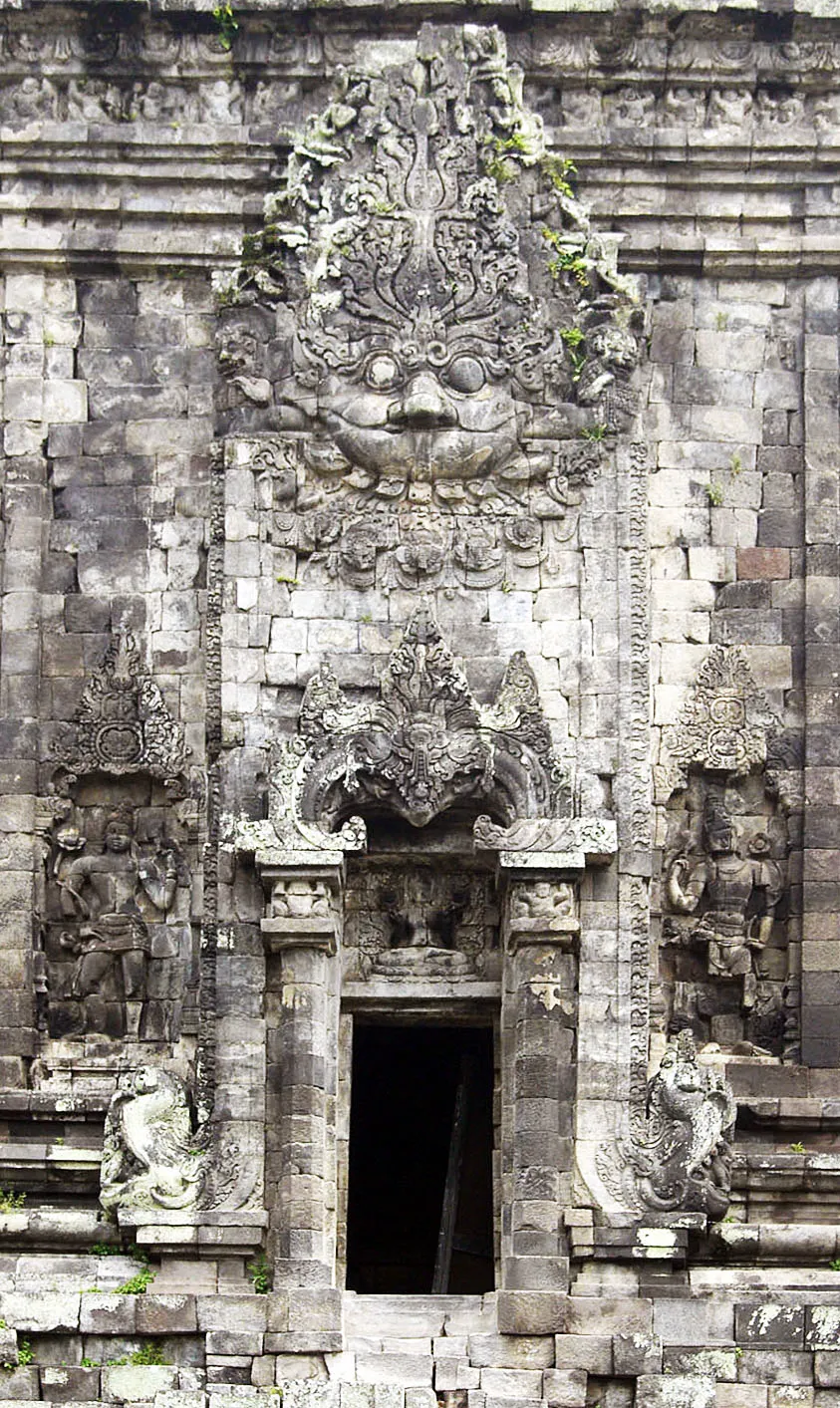
A Detailed Design
The temple’s roof comprises three sections. The lower section follows the polygonal shape of the main structure and features small niches containing statues of Bodhisattvas seated on lotuses. Each niche is crowned with stupas. The middle section is octagonal, with each side adorned with a niche containing a Dhyani Buddha flanked by two standing Bodhisattvas. The top section, nearly circular, also has eight niches but is crowned with a single large dagoba. This octagonal aspect has sparked discussions about possible non-Buddhist influences on the temple, similar to interpretations of the early Borobudur structure.
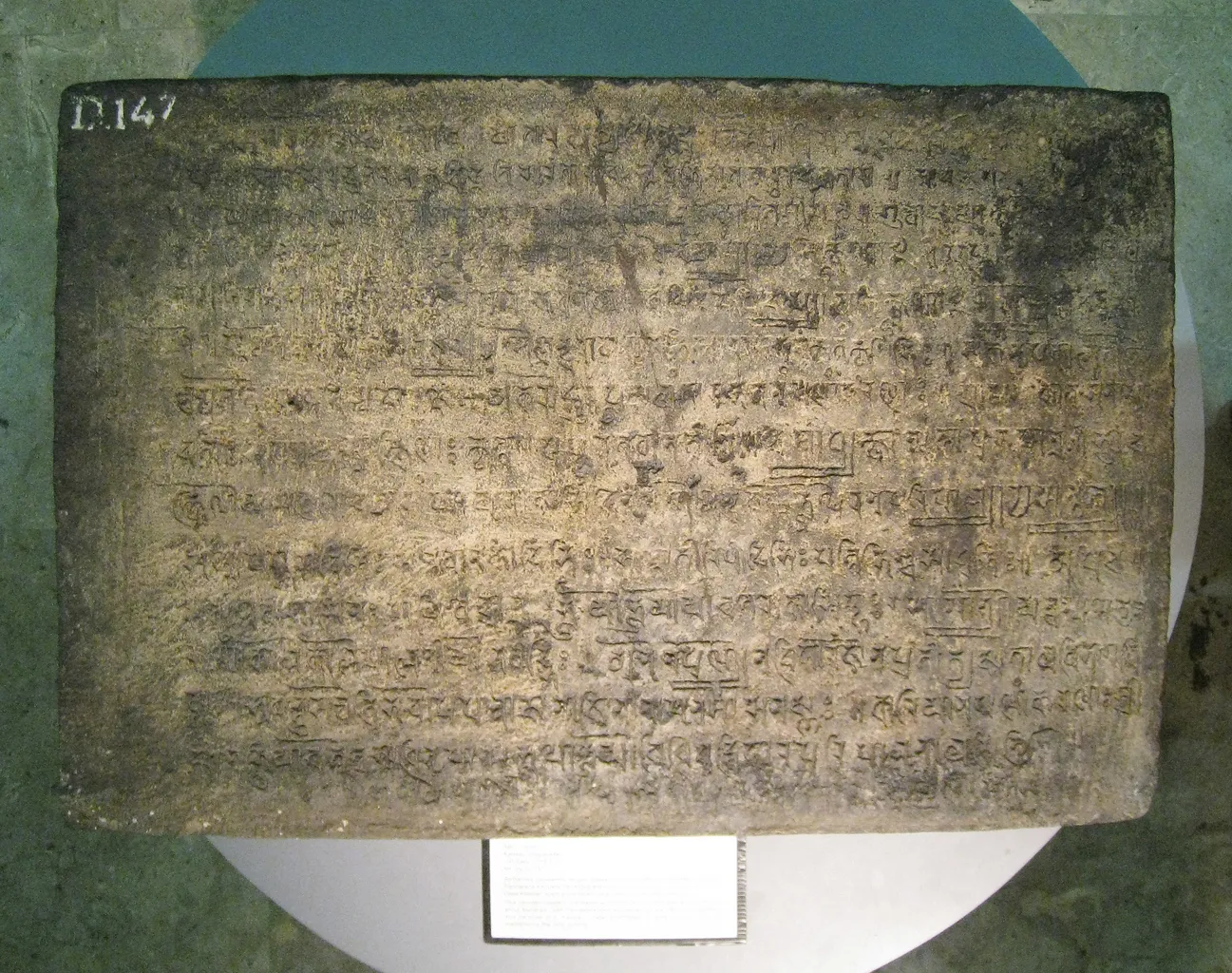
The Heart of the Temple
Facing east, the temple’s eastern room serves as the entrance to the main central chamber. This larger room features a lotus pedestal and a throne adorned with intricate carvings of makara, lion, and elephant figures, resembling the Buddha Vairocana throne found in Mendut Temple. According to the Kalasan inscription, the temple once housed a large, likely bronze statue of the goddess Tara. Unfortunately, this statue is now missing, probably lost to looting over the centuries.
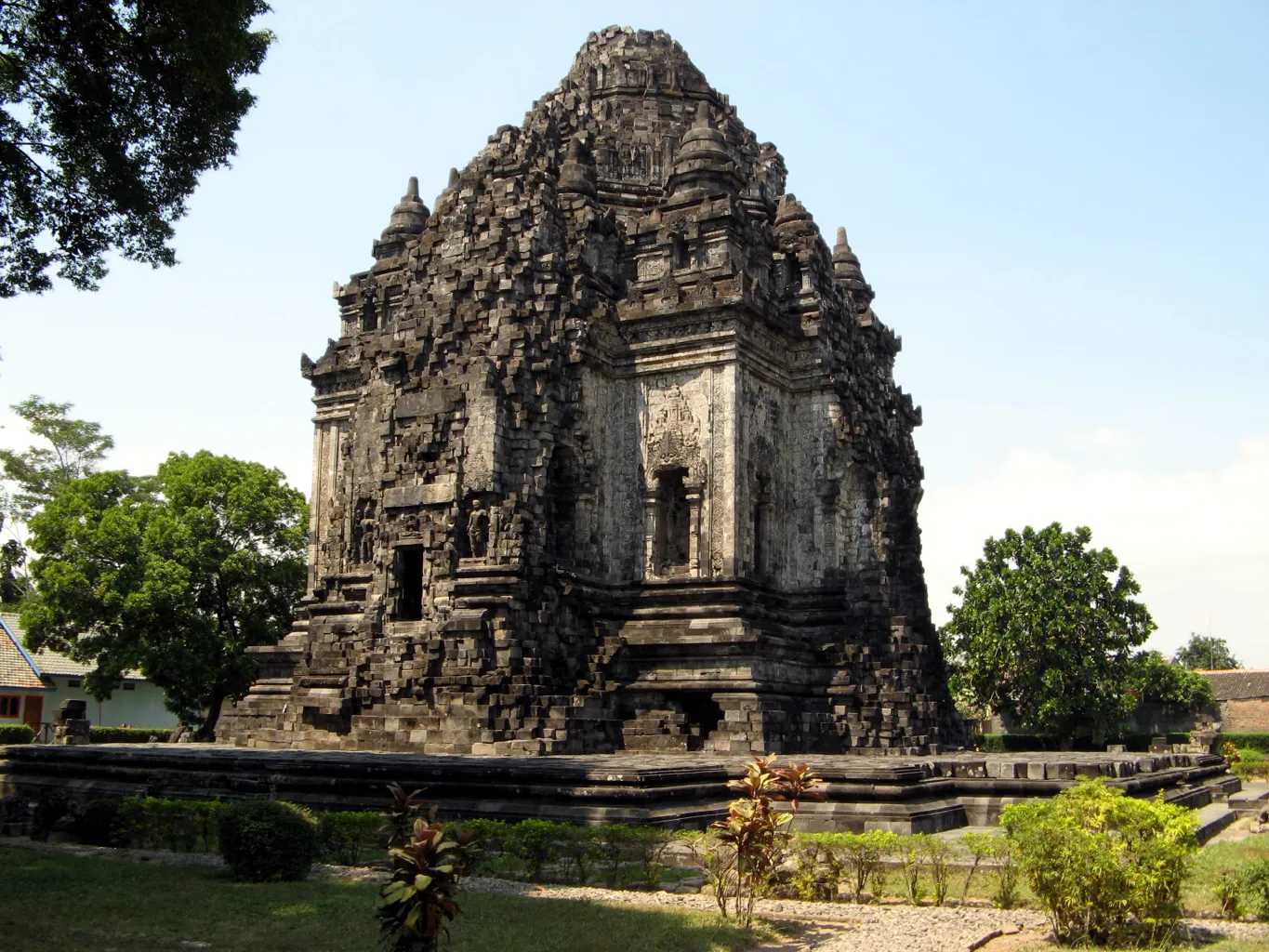
Protecting the Past
Traces of a special white plaster, called vajralepa or “diamond plaster,” can be found on the outer walls of Kalasan Temple. This substance, similar to a material found in the nearby Sari Temple, was applied to protect the walls. While the plaster has worn away over time, its remnants offer a glimpse of the temple’s former glory.
A Rich Tapestry of History
Kalasan Temple resides within the archaeologically significant Prambanan plain. Just a few hundred meters northeast lies Sari Temple, believed to be the monastery mentioned in the Kalasan inscription. Further east, one can find the Prambanan complex, Sewu Temple, and Plaosan Temple, each contributing to the rich tapestry of Java’s ancient heritage.
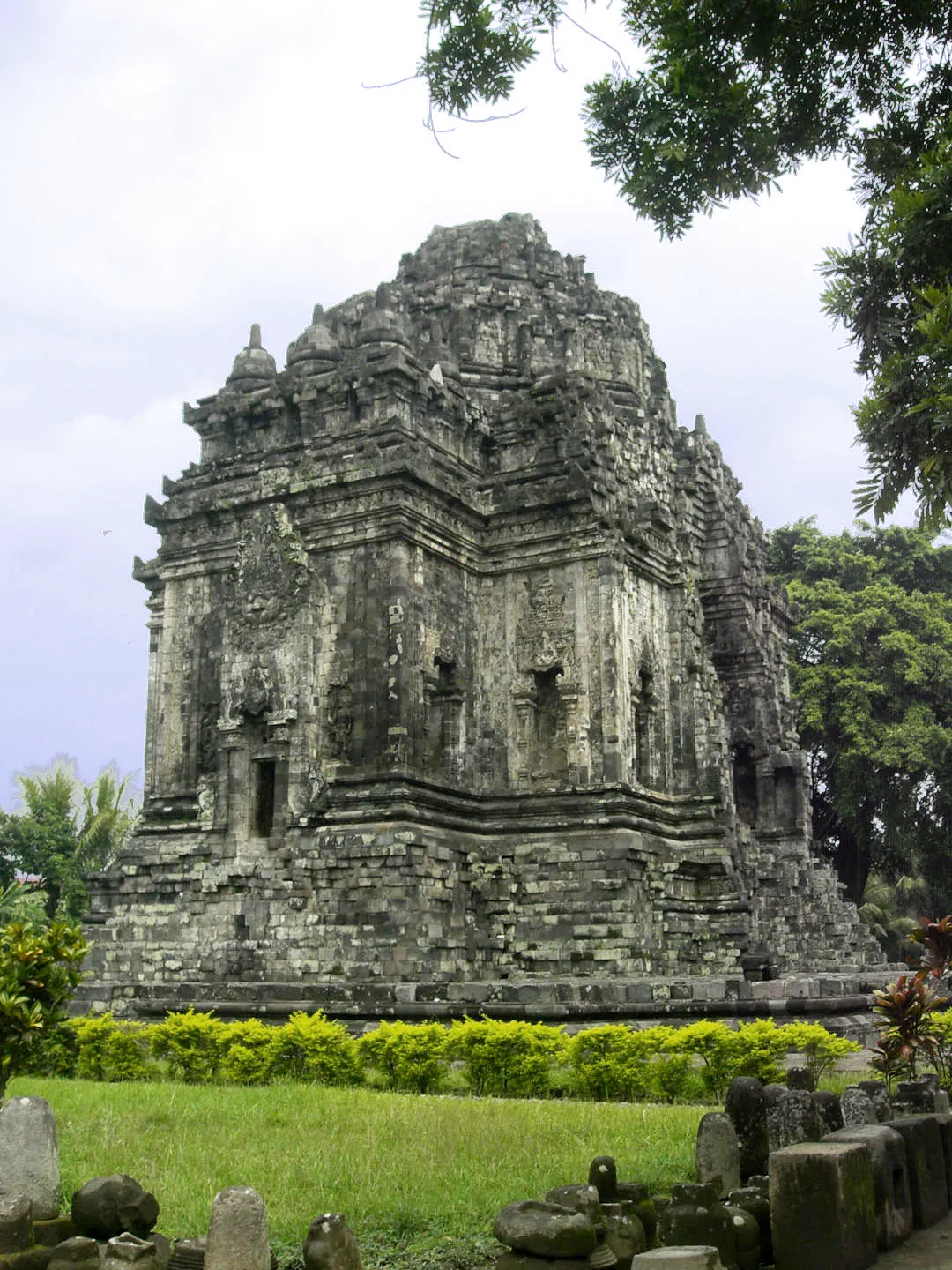
A Legacy Enduring
Despite its current state, Kalasan Temple remains a testament to the grandeur of 8th-century Buddhist architecture. Its intricate carvings and unique design continue to capture the imagination of historians and tourists alike. As ongoing renovation efforts and studies continue, Kalasan stands as a symbol of Java’s rich cultural and historical legacy.
Sources:


